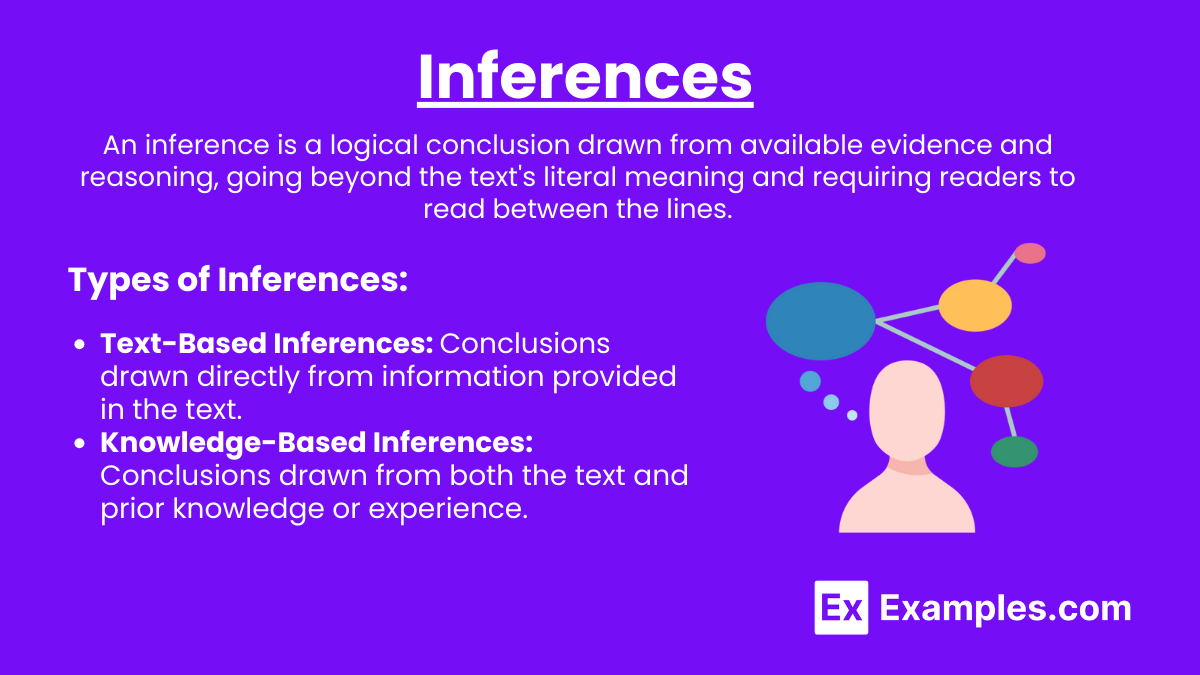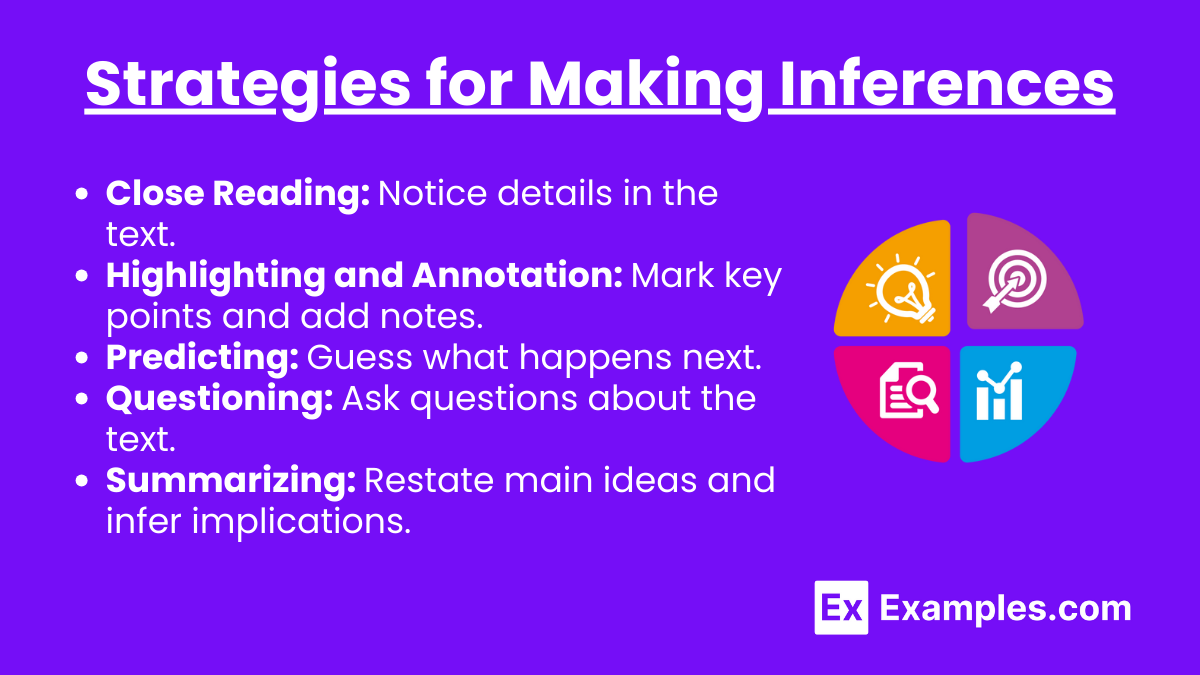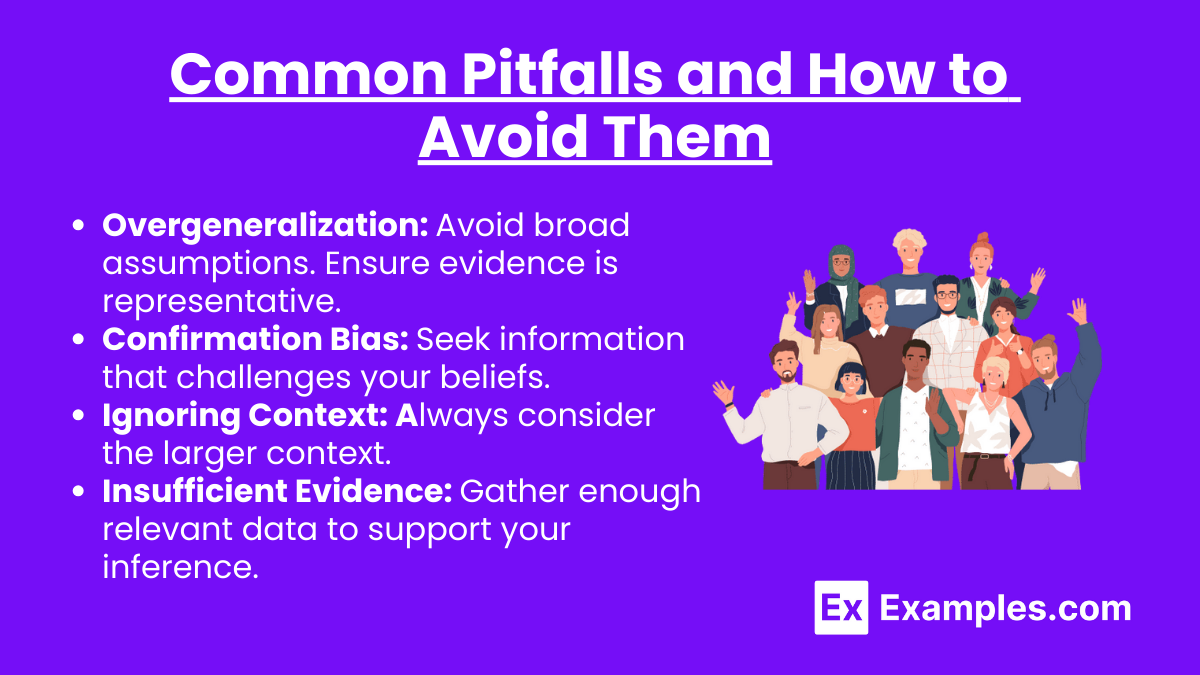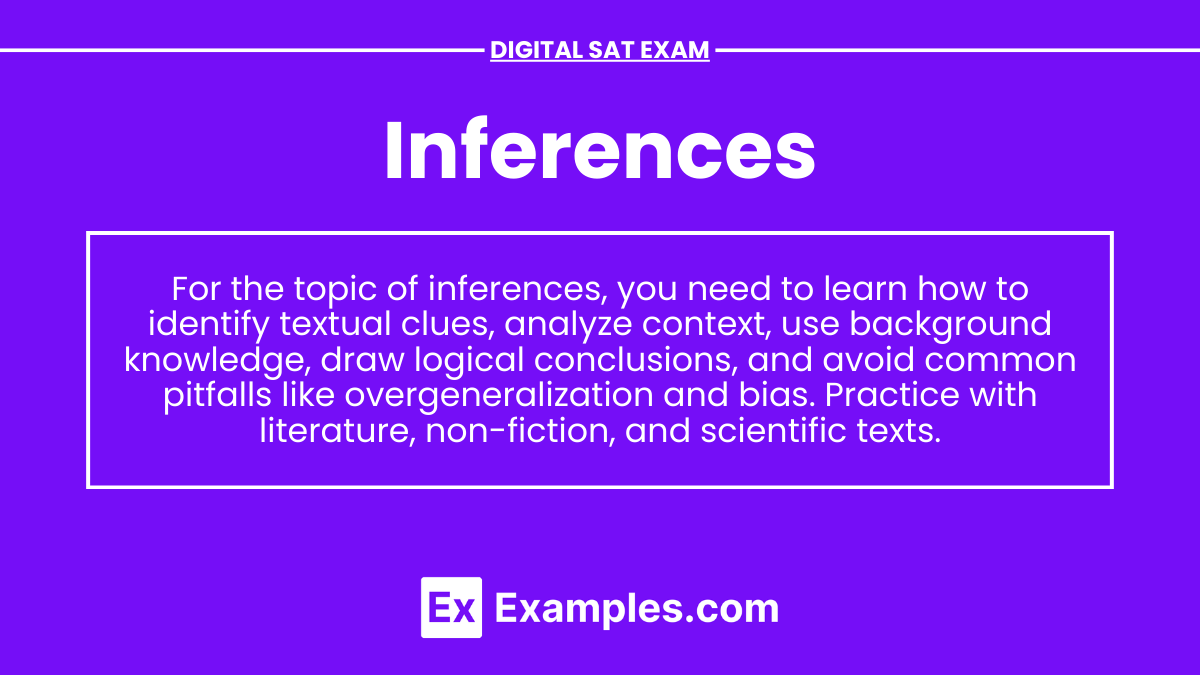Inferences are a critical skill tested on the Digital SAT Exam, encompassing the ability to understand and draw conclusions from given information. Inferences require interpreting implicit information from a text, filling in gaps, and making educated guesses based on context. Mastering this skill is essential for achieving high scores on the reading and writing sections, as it involves analyzing passages, understanding subtle cues, and synthesizing information to form logical conclusions.
Learning Objectives
By the end of this section, you will be able to define inferences, identify different types of inferences, understand how to make inferences from various types of texts, and apply these skills to answer questions accurately on the Digital SAT Exam.Detailed Notes on Inferences
Definition of Inferences

An inference is a logical conclusion or deduction made based on available evidence and reasoning rather than explicit statements. Inferences go beyond the literal meaning of the text, requiring readers to read between the lines.
Types of Inferences
- Text-Based Inferences: Conclusions drawn directly from information provided in the text.
- Knowledge-Based Inferences: Conclusions drawn from both the text and prior knowledge or experience.
Making Inferences in Reading
- Identify Clues: Look for keywords, phrases, or sentences that hint at deeper meanings.
- Analyze Context: Consider the surrounding text and overall context to understand the implicit information.
- Use Background Knowledge: Apply what you already know to help fill in the gaps left by the text.
- Ask Questions: Ask yourself what the author implies but does not state outright.
- Draw Conclusions: Combine textual clues, context, and background knowledge to form a logical conclusion.
Strategies for Making Inferences

- Close Reading: Pay attention to details in the text.
- Highlighting and Annotation: Mark key points and write notes to connect ideas.
- Predicting: Make educated guesses about what will happen next based on the text.
- Questioning: Continuously ask questions about the text and seek answers within it.
- Summarizing: Briefly restate the main ideas and infer their implications.
Common Pitfalls and How to Avoid Them

When making inferences, it’s important to avoid common pitfalls such as overgeneralization, confirmation bias, ignoring context, and relying on insufficient evidence. By being aware of these issues and actively working to mitigate them, you can draw more accurate and reliable conclusions.
- Overgeneralization: Avoid making broad assumptions based on limited information.
- Confirmation Bias: Do not let personal biases influence your inferences.
- Ignoring Context: Always consider the larger context to avoid misinterpretation.
- Insufficient Evidence: Ensure there is enough evidence to support your inference.
Practice with Inferences
- Literature: Infer themes, character motivations, and underlying messages.
- Non-Fiction: Infer the author’s purpose, stance, and implications of the arguments.
- Scientific Texts: Infer hypotheses, conclusions, and future research directions.
Examples of Inferences
Example 1: Literature
Text: “As John walked into the room, everyone fell silent and looked away.”
Inference: John’s presence caused discomfort or tension among the people in the room, suggesting he might have a strained relationship with them or did something controversial.
Example 2: Non-Fiction
Text: “The data shows a significant increase in urban population over the last decade, while rural areas have seen a steady decline.”
Inference: There may be factors such as better job opportunities, healthcare, and education in urban areas that attract people, leading to urbanization.
Example 3: Scientific Text
Text: “After the introduction of the new medication, the patients showed a 50% improvement in symptoms compared to the control group.”
Inference: The new medication is likely effective in reducing symptoms, indicating its potential for broader medical use.
Example 4: Historical Document
Text: “The king’s decree was met with widespread protests across the kingdom.”
Inference: The decree was unpopular and possibly unfair or oppressive, leading to public discontent and resistance.
Example 5: Everyday Scenario
Text: “She checked her watch for the third time and tapped her foot impatiently.”
Inference: She is likely waiting for someone or something and is becoming increasingly impatient due to a delay.
Practice Questions
Question 1
Text: “Despite the heavy rain, the football match continued, and the spectators stayed, cheering for their teams.”
What can be inferred about the spectators?
A) They were hoping the rain would stop soon.
B) They were very dedicated to their teams.
C) They had no other plans for the day.
D) They did not mind getting wet.
Answer: B
Explanation: The fact that the spectators stayed and continued cheering despite the heavy rain indicates their strong dedication to their teams.
Question 2
Text: “After reviewing the quarterly report, the board decided to cut down the marketing budget and invest more in research and development.”
What can be inferred about the company’s priorities?
A) They are prioritizing short-term profits over long-term growth.
B) They believe that their marketing strategies are ineffective.
C) They see potential for growth through innovation.
D) They are facing financial difficulties.
Answer: C
Explanation: The decision to invest more in research and development suggests that the company believes innovation is key to future growth.
Question 3
Text: “The politician avoided answering the question directly and instead spoke about the need for more transparency in government.”
What can be inferred about the politician’s stance on the question?
A) The politician disagrees with the question.
B) The politician does not know the answer.
C) The politician is deliberately avoiding the question.
D) The politician believes transparency is irrelevant.
Answer: C
Explanation: By not answering the question directly and changing the subject, the politician is likely trying to avoid addressing the specific issue raised.


